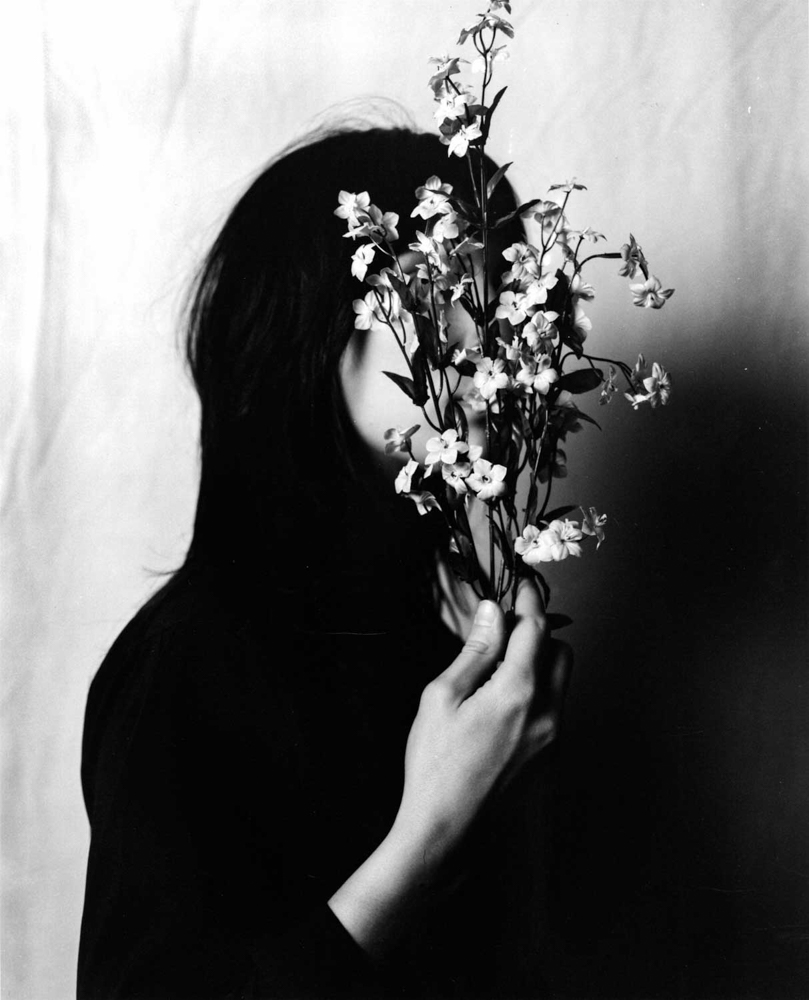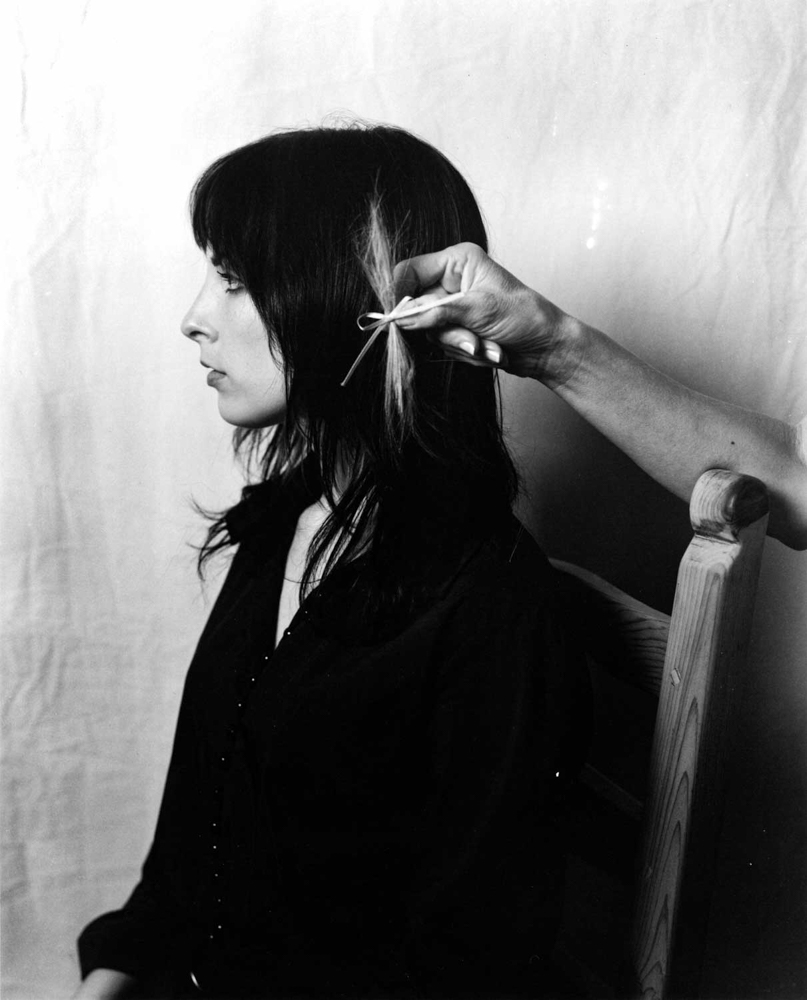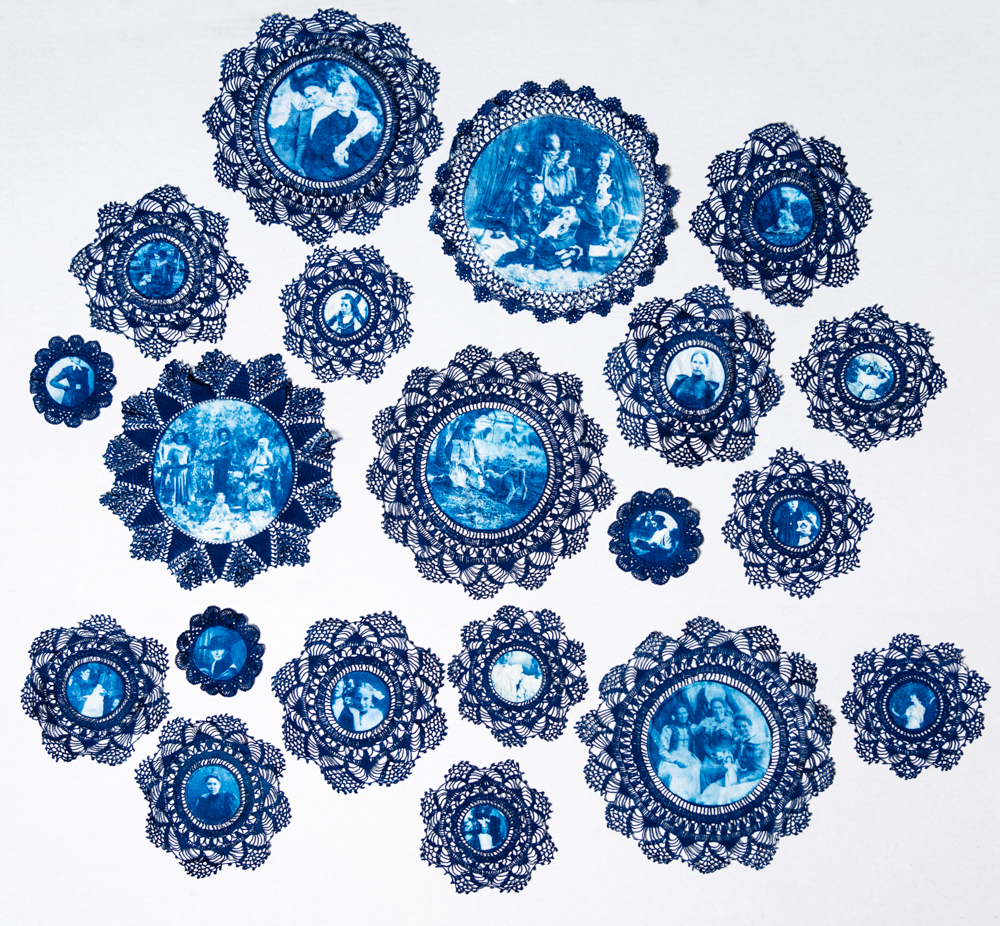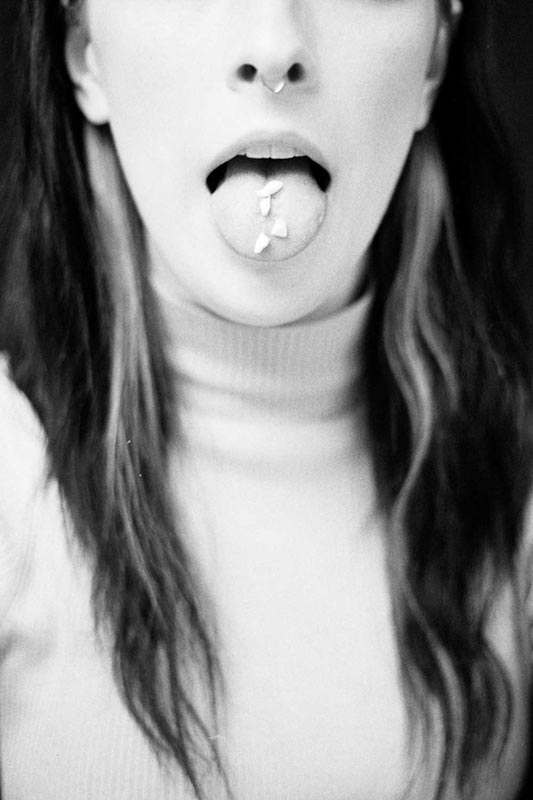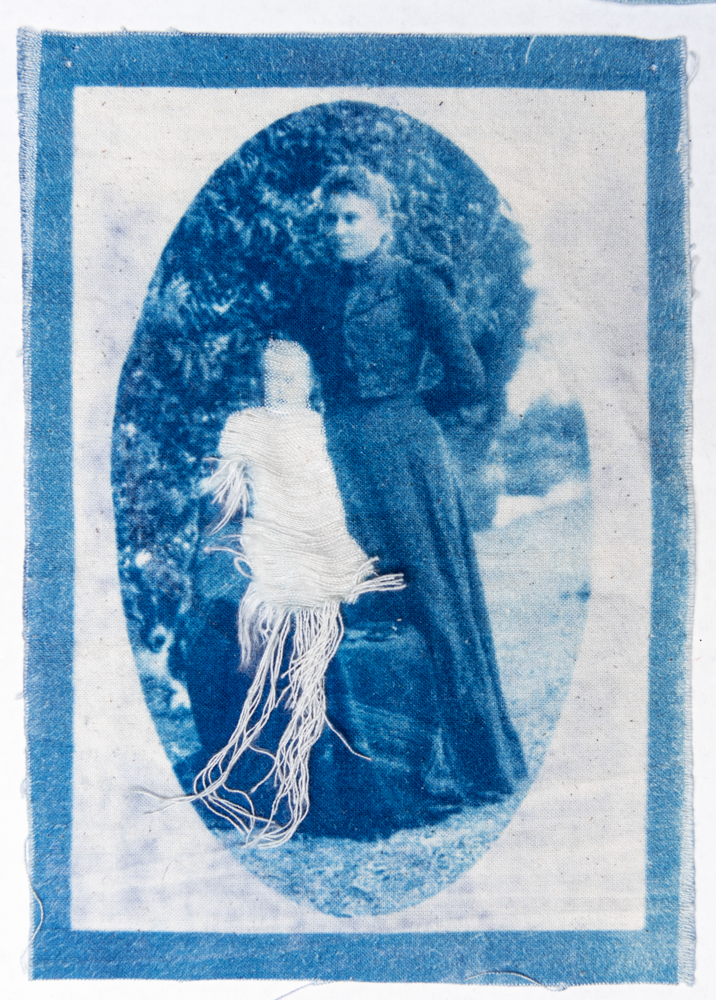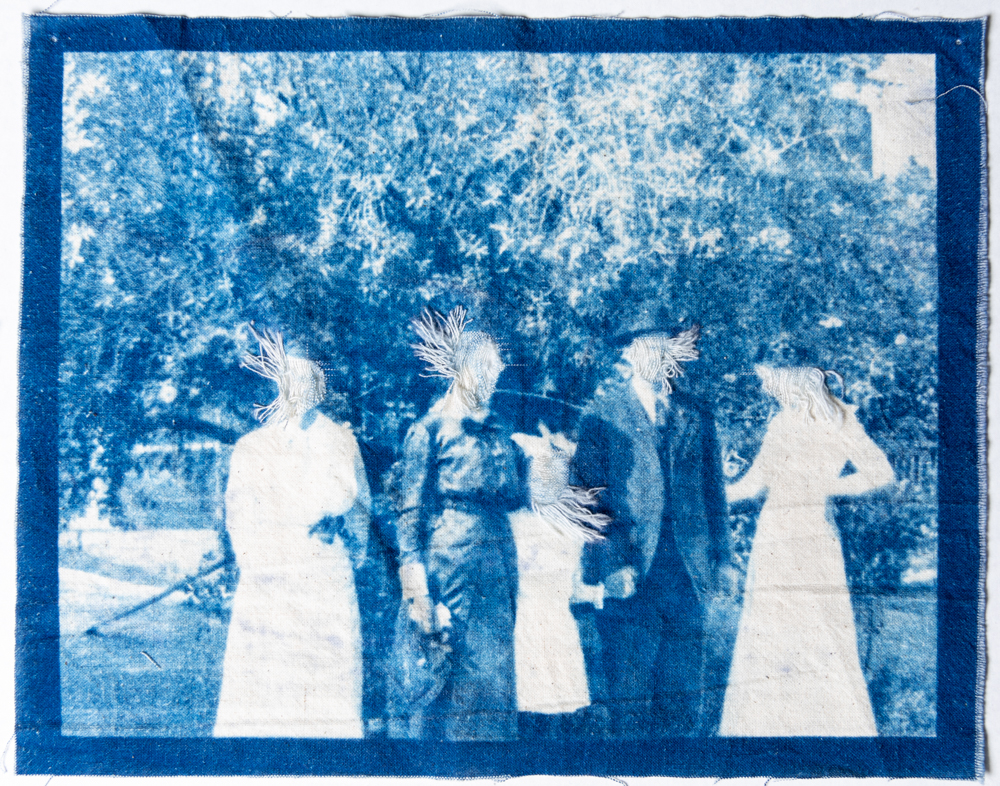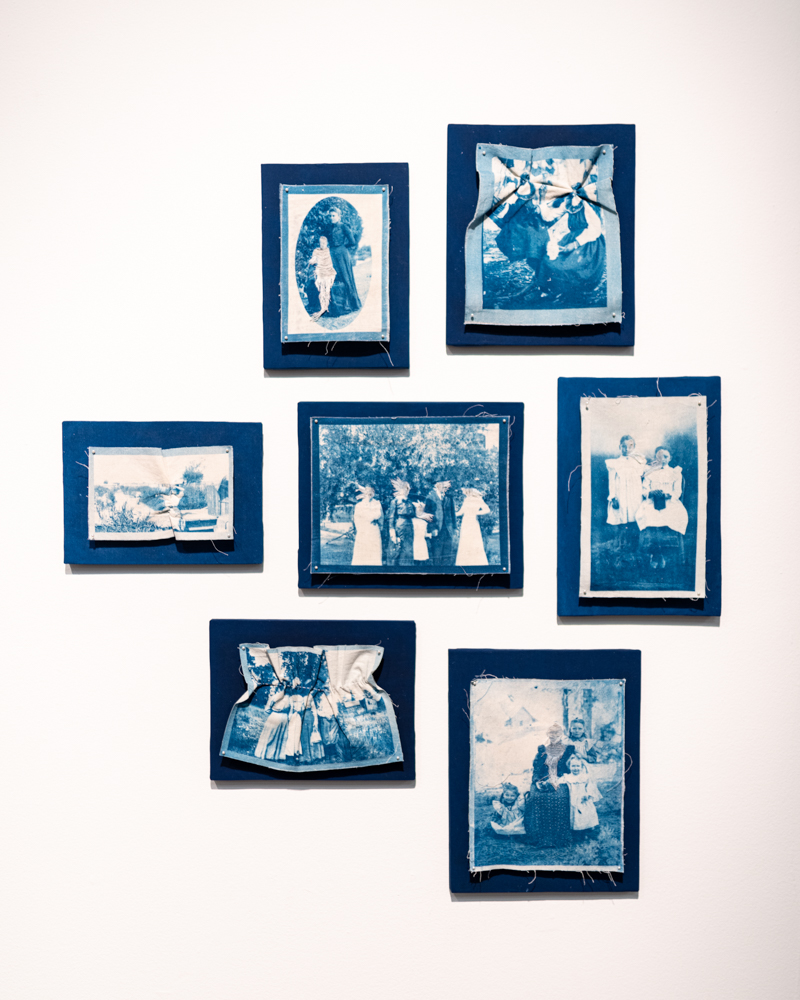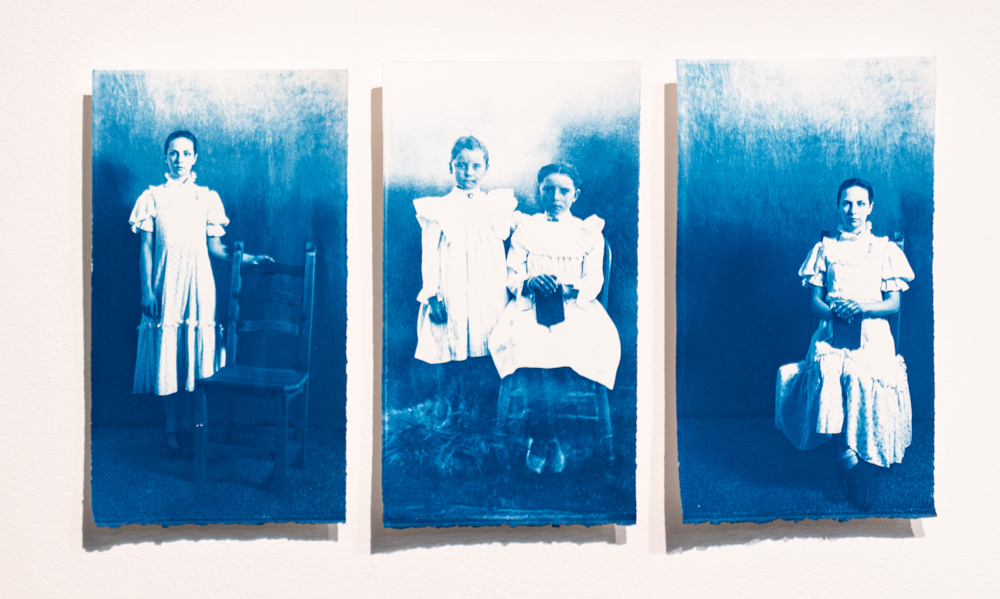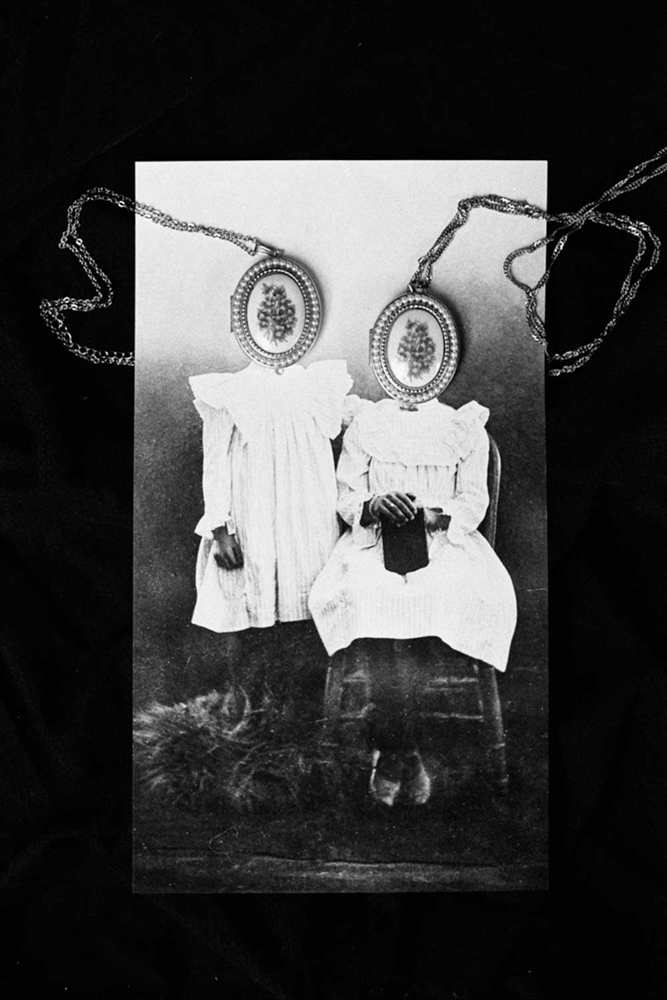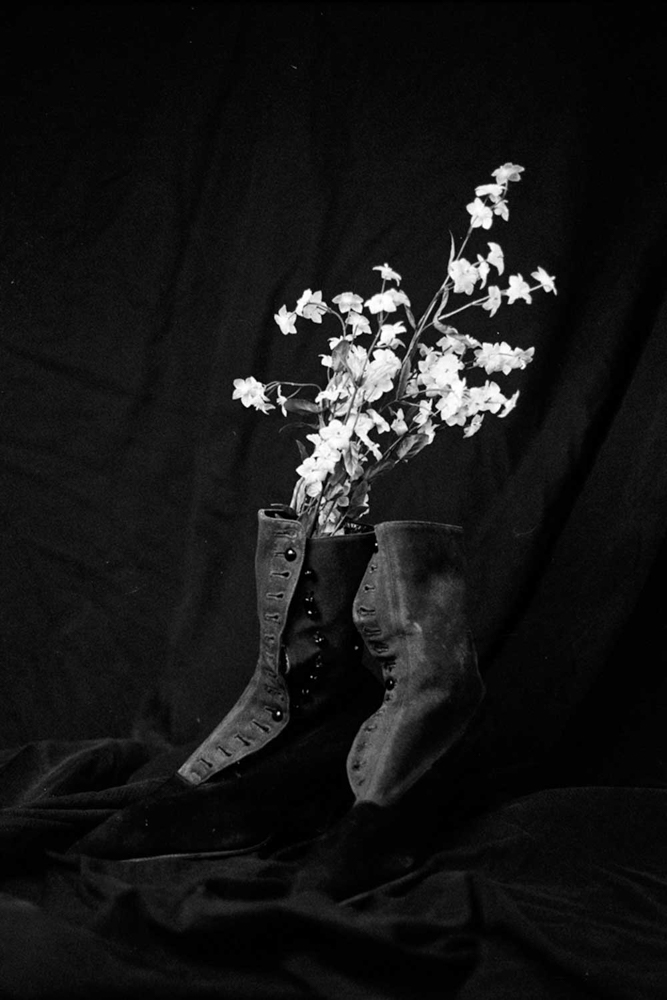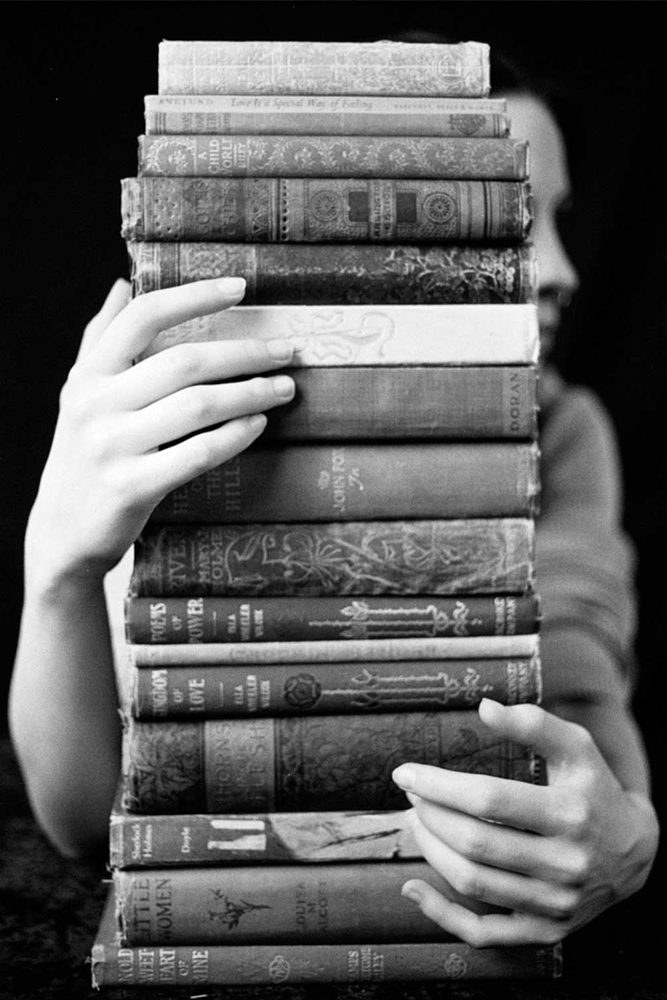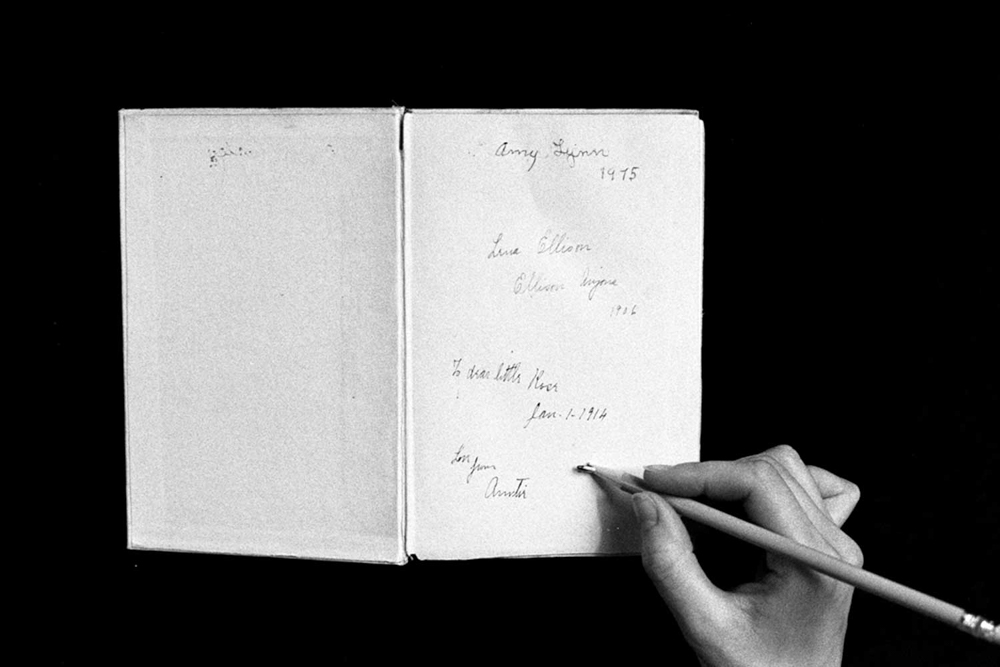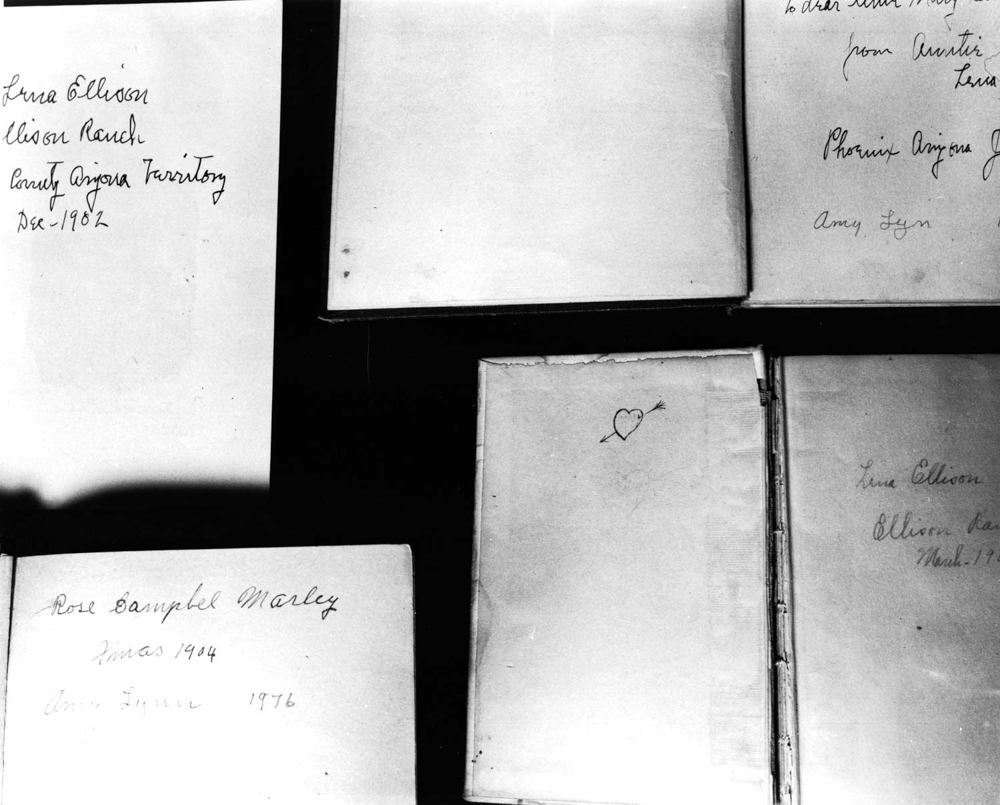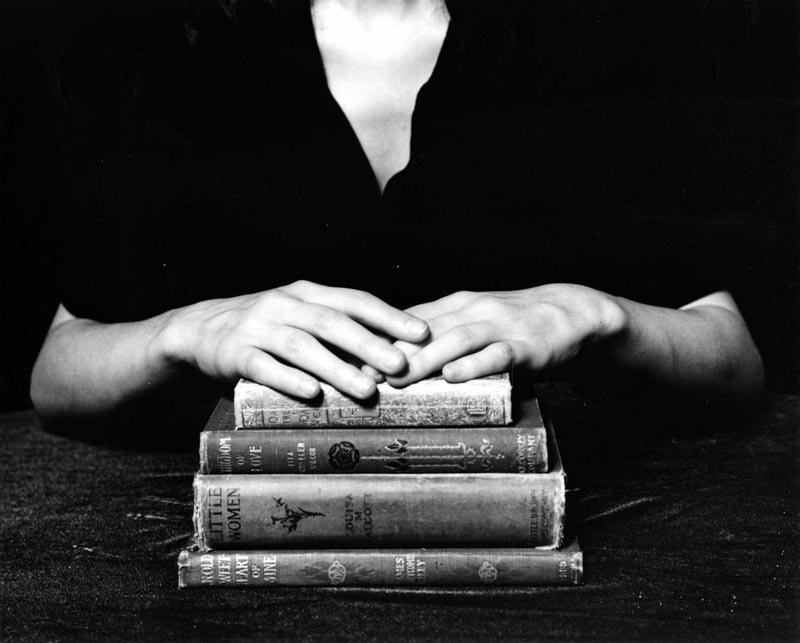Allison Calteux: remnants // relics // remembrance
Swiftly after I graduated from the School of the Art Institute of Chicago in 2021, I was offered an Associate Lecturer position in Photography and Imaging at the University of Wisconsin-Milwaukee. In my very first semester, I was introduced to Allison Calteux– a second-year graduate student at the time and now a colleague.
Allison Calteux is a photography-based artist from Milwaukee, Wisconsin. She graduated in 2020 from Carroll University with a bachelor’s degree in Communication and Photography and earned her MFA from the University of Wisconsin-Milwaukee in 2023. Calteux’s studio practice explores the relationship between the past and the present through familial archives, self-portraiture, and historical photographic processes. Her work has been exhibited in various galleries including the Trout Museum of Art (Appleton, WI), INOVA Gallery (Milwaukee, WI), Bliss Gallery (Waukesha, WI), Decode Gallery (Tucson, AZ), and more.
She recently created a rich body of work titled Remnants // relics // remembrance where she utilized historical photographic processes to examine her family archive with an emphasis on her ancestral matriarchs. As an archival photographic researcher myself, I was naturally drawn to Allison’s work and wanted to learn more about her journey and her process. We met together to talk about it all and our conversation can be explored from here.
Allison Calteux (b. 1997) is a photography-based artist from Milwaukee, Wisconsin. She graduated in 2020 from Carroll University with a bachelor’s degree in Communication and Photography, and earned her MFA from the University of Wisconsin-Milwaukee in 2023. Calteux’s studio practice explores the relationship between the past and the present through familial archives, self-portraiture, and historical photographic processes. Her work has been exhibited in various galleries including the Trout Museum of Art (Appleton, WI), INOVA Gallery (Milwaukee, WI), Bliss Gallery (Waukesha, WI), Decode Gallery (Tucson, AZ), and more.
Calteux currently works as a freelance photographer and Associate Lecturer of Photography and Imaging at the University of Wisconsin-Milwaukee.
Remnants // relics // remembrance is a commemoration of familial lineage towards the future through the traces of the past of my ancestors. The archive of objects and photographs they left behind are brought into the present through my photographs; self-portraits and still lifes revealing interactions with the books, jewelry, and images that remain posthumously. By wearing my ancestors’ jewelry, posing alongside their photographs, and incorporating my own objects and images into the archive, I am reintroducing embodiment to absence. Photographing these interactions becomes a part of a ritual in which I explore my own place in time and practice remembrance towards the future. Engaging with the contents of the archive brings the belongings of my ancestors into the present to be reimagined as relics. These everyday objects become symbolic stand-ins for my ancestors and are presented with reverence. Within this archive, I choose to pay homage to the women in my family – those who are pictured, those whose belongings have been passed down, and the one whose photographs are a part of this work. As equal parts archivist and artist within this body of work, I am assembling a history so that I may become a part of it one day.
Printing images from this inherited archive as cyanotypes and capturing my own performances on film references both historical and contemporary photographic practices which parallels the historical and contemporary timelines within each piece. Through this work, I am creating a record of my own life in conversation with the past and aligning my photographs with those within the archive. The creation of this work is imbued with a melancholic recognition of my own mortality, while the process of archiving provides a method of self-preservation. This merger of the past and present allows me to consider what traces of me will exist within a future archive: a future where the photographs, jewelry, and handwritten notes of today are remnants to be rediscovered.
ANP: I am curious about the moments leading up to when you went to grad school. Did you know what you wanted to research in your graduate studies or did it just kind of happen when you got there?
AC: Yeah, no, it definitely happened when I got there in undergrad. I really just did digital photography and the program I was in was pretty small. So that was the only focus, and obviously with my thesis work, I went an entirely new and different direction. So even my first year, arguably maybe my first year and a half of grad school, I wasn’t really doing anything in the realm of what I ended up doing for my final project because I took a materials and processes class where I learned some historical processes and some alternative processes. That led me into doing the cyanotype work and then I learned about the dark room and that also led me into the class I took with you on archives. So it all kind of tied together and ended up working out really well to lead me to this more analog way of working that I wasn’t as familiar with.
So it was definitely an introduction that I came to in grad school. I knew I wanted to keep doing art, and I wanted the opportunities that came with being or rather getting a master’s degree, but I didn’t really know where it was going to take me until I got there. It was all a big fun surprise.
ANP: I think that’s a nice transition into the next question that I have because you took an archive class with me, but I feel like you were already working in that realm before you got there. So, I’m curious about the background behind the work that you made for your thesis show.
AC: I started working with and looking at my family’s archive my first year in grad school. I didn’t really consider it as a real possibility or a real route for myself until a little bit later on. You know, you’re hearing so many different opinions and thoughts and you’re seeing your classmates do certain things and so it’s kind of being pulled in a million different directions. Of course, as artists, I feel like we always have a million different interests. You just have to pick one thing per project, or else you’re going to drive yourself crazy. So, I started looking at things in my first year – towards the end of my first year – and then slowly worked my way up. By the time I took your class, I had a pretty good idea and it just helped me take a deeper dive into it.
So yeah, the seed had been planted and I had always been interested in my family’s history. I knew that a lot of the pictures that I ended up working with existed prior to using them for this thesis project. I knew that the material archive existed in terms of the things my mom had stored in our family basement, so it was just a matter of taking the art side of my brain and the interest in the history and the family side of my brain and bringing them together to combine those interests and make one route from these seemingly different parts of my life.
ANP: Once you figured out “Okay, this is what I want to make, and here’s what I want to talk about”, what was that creative process like deciding what materials you were going to use and how you want that to convey what you’re trying to communicate?
AC: That’s a really good question because again, in all of the various committee meetings and and classes and studio visits I had, there was a lot of discussion about materiality and process and the relevancy and the merits of the various things I was doing; but the classes that I was taking really guided my process. I knew that I wanted to work at least a little bit with my hands, especially with the cyanotype process in shooting film, things like that.
In terms of the practicality and also joining the contemporary with the historical – working with processing – that did a little bit of both the digital and the analog, so like printing out the digital negatives for the cyanotypes; but, then I’m hand applying the emulsion, things like that, working with older materials. The theoretical application was already in my head, but then you find the connection and the research that joins the two. So for me, working with my hands with these analog processes and thinking about the historical processes not only aligned with the historical nature of the archive and the materials that I was working with there, but then also this idea of death and me leaving a mark in my work that will exist beyond my lifetime. I think that the archive is a great example of that.
So, my work is just an extension of this idea of the archive, but in a more intentional way of creating something to be left behind versus a lot of things in the archive or just the things we have that inevitably get left behind. Having this physical touch and the evidence of me working with the material in the final work was really crucial to me, and that was something that I couldn’t get with just digital photography alone. Diving into that, even if it’s a little bit more subtle, like me shooting on film, you’re not literally seeing (at least you shouldn’t if it’s processed properly) the evidence of me doing something to the film. But, there’s still the knowledge that I had to process the film. I shot it. I sat in front of the camera.
ANP: I liked hearing what you said about creating something that is meant to be left behind. It’s like they’re there because they’re there and somebody liked it, but it maybe wasn’t intentional– not in the way that we think of it as artists.
AC: Yeah, something that’s just a use item or just like a memento that is intended to be consumed during somebody’s life, but then it’s inherently left behind because versus being like “I’m going to create this thing to memorialize myself or memorialize another person.”
ANP: Throughout working with archives, do you find in your personal life that you think more about things that you’re leaving behind, or does that mindset leak over at all? Or is it pretty much separate?
AC: I think a little bit. It might be more subconscious in the way that I handle my life, so it’s not necessarily that I’m going about my day-to-day thinking Oh I got this thing and now it’s going to stand in place to me when I die. It’s less about that and more just thinking about my impact and things that I want to leave behind versus the things that are left behind just by manner of existence. So from more of a moral standpoint, I try to reduce my consumption– things like that.
It’s not inherently tied to this idea of memorializing myself, but rather almost the opposite. I want to control what I leave behind and so I try to minimize it in certain ways and leave behind the good stuff, kind of curate my existence. I don’t know what will exist of me after I’m gone.
ANP: I relate to that, especially with curating your existence. Nobody knows for real when the clock runs out, but it’s also a scary thing.
It’s interesting thinking about this because it is through archives that we’ve even found out horrible or amazing stuff about people whether they’re alive or dead.
AC: You know, it’s wild and that’s such a funny point. Like hmm… Do I want to journal about this thing or do I want to just keep it to myself? Because what if I kick it? Like somebody’s gonna have to read that?
It’s a funny thing to think because once you’re gone, I guess it doesn’t matter, but it’s hard to reconcile the two.
ANP: Right. Once you’re gone, it’s out of your control.
In the art world, there’s sometimes a separation between the artist and their personal life and a hidden “rule” that those things need to overlap at all times. I don’t think that’s the case. I feel like they’re hand in hand and they can overlap, but they don’t have to. So, what do you do to decompress or enjoy life outside of creating?
AC: That’s a really great question. I think that there’s this myth of the tortured artist always in the studio. The work is such a part of them and, yeah, that’s really romantic and all, but I think that it’s not very practical. You’re gonna burn out.
I mean photography, in general, is still so central to my everyday– teaching it and I’m shooting weddings and portraits and bands and events like it’s still 100% there in my mind. So photography can’t really be put aside. It’s definitely the art side of my brain. I kind of have my time for the making-money side of my photography, and then when I do put it down, and I’m not thinking about it as much… I’m always probably thinking about it. It’s just a matter of whether it’s at 100% in my brain or 5% turned down in the back.
So yeah, doing other things with photography because I do love it is still a nice way to decompress to just do something else with the thing that I enjoy and I’m a big music person. If I’m not shooting a concert, I love to just attend them, so that’s always a big thing too. That’s number one, I’d say.
ANP: I appreciate that.
What are you looking forward to next or do you have anything coming up in general that you’re excited to dive into?
AC: With my thesis project, in my mind, I still see it as a bit open-ended not only because I think a lot of works are kind of like that. They end up, you know, being open-ended to at least some extent, but there are some locations and things that I want to visit to photograph in connection to that side of my family. So that’s one thing in my mind. I did start some new work over the summer in the same vein with a different side of my family. I don’t mean this to be dark, but I had a great-aunt pass away. So photographing her house and some of her belongings, I got a lot of her belongings, and thinking about that, I took some self-portraits in her house before it was sold– things like that. I got her old Polaroid camera, so those are things now in my mind along similar lines of exploring familial connection and using a physical archive and using a photographic archive to connect to the past and to think about the things that we leave behind throughout our lives– but just with a different person, somebody that actually know, unlike this other bodywork that I did where I didn’t know any of those ancestors that I had.
I’m also thinking about material differences as well where I was doing digital photography. I’ll probably do some Polaroid work just because now I’ve got the camera that was hers, things like that. So that’s in my mind right now. [It’s a] matter of finding the time to really dive into that. I’m hoping that next year will give me a little bit more time.
Continuing teaching and doing that again, I’ve got my toes in a lot of different pools right now in terms of all the different things I do just to keep myself afloat and busy. It’s good though I like the variety.
ANP: That’s awesome. Hoping for you that all goes well.
Alayna N. Pernell (b. 1996) is a visual artist, writer, and educator from Heflin, Alabama. Her practice considers the gravity of the mental well-being of Black people in relation to the spaces they inhabit, whether physically or metaphorically. Throughout her research and making, using a compilation of photography, text, and found materials, she unearths and examines the harsh realities and complexities of being a Black American woman.
In May 2019, she graduated from The University of Alabama where she received her Bachelor of Arts in Studio Art with a concentration in Photography and a minor in African American Studies. She received her MFA in Photography from the School of the Art Institute of Chicago in May 2021. Her work has been exhibited in various cities across the United States, including FLXST Contemporary (Chicago, IL), Refraction Gallery (Milwaukee, WI), JKC Gallery (Trenton, NJ), RUSCHWOMAN Gallery (Chicago, IL), Colorado Photographic Arts Center (Denver, CO), Griffin Museum of Photography (Winchester, MA) and more. Pernell was named a 2023 Mary L. Nohl Fellow; in 2020-2021 she was the recipient of the James Weinstein Memorial Award by the School of the Art Institute of Chicago Department of Photography and the 2021 Snider Prize award recipient by the Museum of Contemporary Photography. She was also recognized on the Silver Eye Center of Photography 2022 Silver List, Photolucida’s 2021 Critical Mass Top 50, 2021 Lenscratch Student Prize Honorable Mention, and more.
She is currently the Associate Lecture of Photography and Imaging at the University of Wisconsin-Milwaukee.
Follow Alayna Pernell on Instagram: @alaynapernell
Posts on Lenscratch may not be reproduced without the permission of the Lenscratch staff and the photographer.
Recommended
-
Luther Price: New Utopia and Light Fracture Presented by VSW PressApril 7th, 2024
-
Artists of Türkiye: Sirkhane DarkroomMarch 26th, 2024
-
European Week: Sayuri IchidaMarch 8th, 2024
-
European Week: Steffen DiemerMarch 6th, 2024
-
Rebecca Sexton Larson: The Reluctant CaregiverFebruary 26th, 2024

